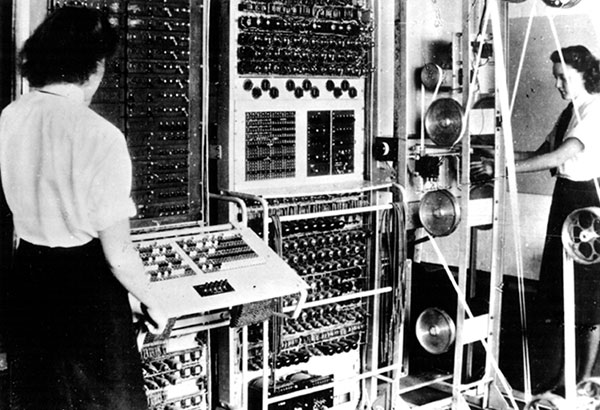A couple of years ago, the Victorian Government gave Melbournians a special gift: a sickly green electronic public transport ticketing system called MYKI.
MYKI is something like London’s Oyster system and the many other electronic ticketing systems used all over the world, with a few small differences. For one, it doesn’t really work. And secondly, at a cost of $1.5 billion, it is made entirely of gold.
One of the first things consumers discovered about the MYKI system was that, should you not have access to the 14 MYKI machines dotted around the city, nor time to wait behind the many people lining up to try and use these machines, you could top up your card whenever you like using the Internet. Of course, right? Just log on to the MYKI web portal and put money on your MYKI card, and then, at least 24-48 hours later, you can get on a tram or train or bus and go anywhere.
Soon, though, people started to ask: Why does it take at least 24 hours, and often much longer, for this money, once sent, to become usable on a MYKI? What is MYKI doing during that 24-48 hours, that vast swathe of time during which so many other comparable services can process untold thousands of more complex tasks almost instantly?
Until now, MYKI’s methods have remained a mystery. People have speculated: Are they using those old credit card swipers you sometimes see in rural motels? Is the money passed through an elaborate system of tubes and obstacles, like in the board game Mouse Trap? Or is it being traded, so as to reap more income for further innovation? Finally, though, thanks to a source high up in MYKI’s Dept. of Innovention, we can reveal, for the first time, the complex and many sided process by which MYKI tops up your cards.
HOBO COURIERS

During MYKI’s interminable roll out, one of the Chief Officers at the Dept. of Innovention discovered that the city had at its disposal a massive untapped resource: hobos. Hobos can be found in almost all parts of the city, and, as several expensive feasibility studies pointed out, are frequently at a loss for what to do with themselves.
Not anymore! MYKI has ingeniously put these down-on-their-luck men and women to work, pressing into their unwashed hands post-it notes containing individual top up transactions. Each hobo must then either make their way from the MYKI City HQ to MYKI’s Financial Transaction Processing Complex Centre (FTPCC), located in a compound some sixty kilometres out of town, to deliver the transaction in person, or else they can barter with other Hobo Couriers to do it for them –– a system that, as a MYKI spokesperson was keen to point out, has transformed a once seemingly immovable demographic into a ‘buzzing hive of tech economy’.
LISTENER MICE

If no hobos are available, MYKI HQ’s highly trained staff relay your transaction to a team of mice who have had human ears grafted to their backs. To maximise productivity, the grafts are done by MYKI call centre workers while on calls, a fact that explains both the uniformly sloppy surgery and the inability of said call centre workers to aid customers with even the most basic enquiries.
As a result, the mice list hopelessly to one side or the other on their trek from the call centre to the FTPCC. It’s a gruelling and existentially hopeless march, as each mouse must negotiate the city’s subterranean network of sewers and storm drains knowing that their cargo will be useless to Complex staff, as even the mice understand ears can yet only hear, and not speak, a fact of physiology that has so far managed to elude the Dept. (A MYKI spokesperson recently said they are ‘months away’ from getting the ears to talk.)
PSYCHIC TRANSFER
Dept. of Innovention heads believe that wireless technology is both primitive and transitory—that, much like those first computers that took up a city block, it will become nothing more than a quaint footnote in the grand narrative of technological progress. The future, they believe, is in our heads—namely, in our largely untapped power to transfer/force thoughts into other people’s minds.
In order to harness this incredible, free resource, MYKI HQ has a whole sub-department of ‘relayers’ who memorise and psychically send out top-up transactions. Information on this department is scarce, but a former staffer has claimed that she was encouraged to wear loose clothing made of natural fabrics, and worked in near darkness. Across town, in a basement at the FTPCC, so-called ‘receivers’ attempt to write down the information passed through to them from the relayers.
So far, internal documents reveal, much is being lost in translation—receivers routinely write down relationship troubles, financial woes and dark, previously hidden forces in their own psyche—but a MYKI spokesperson says they are ‘within reach’ of a great breakthrough, the likes of which ‘literally has no ceiling’.
CODE & CODE BREAKERS

After swallowing whole an amount of money that would have been enough to, say, erect the tallest skyscraper in the world, or build a major airport, MYKI understands better than anyone that money is precious. So in order to protect your money, highly paid MYKI engineers developed an ingenious and constantly evolving code to encrypt each transaction. Once the transactions are delivered, the FTPCC must then crack the code to retrieve the financial data, as the Dept. considers it too risky to have on hand the key provided by the engineers.
To achieve this task the FTPCC has employed no less than 45 highly skilled WWII code breakers. Though quite advanced in years, and prone to sudden napping and fits of impotent rage, these code breakers occasionally say and do things no one expects, which Dept. heads maintain are the telltale signs of genuine code breakers. So far, almost half the code breakers have reportedly died on the job, a situation a MYKI spokesperson said is ‘unfortunate, but not unexpected.’
MEGA TUNNEL
Under continued pressure from Melbourne commuters, the Dept. of Innovention last year commissioned a $40 million study to identify potential bottlenecks in their processing system. The primary bottleneck, the eighteen-month study found, was in fact the physical distance between HQ and the FTPCC. The report’s primary recommendation was not to combine the two facilities, as most experts suggested, but rather to build an enormous tunnel between them.
The new tunnel will feature separate lanes for the hobos and mice, spacious on-brand rest areas, and a roomy, lightly scented upper passageway through which psychic transfers can travel unimpeded. The tunnel, which is due to be constructed from 2027, pending a series of feasibility studies to be conducted by a Dept. head’s cousin, is expected to shorten the transaction time from the current ‘at least 24 hours’ to ‘around 24 hours’, a MYKI spokesperson said.
The total cost has not been tabled, the spokesperson added, though the government hopes it will be slightly less than their remaining cash reserves. There are also hopes that the tunnel can be used for other, potentially lucrative purposes, such as a Moscow-style getaway route for fleeing officials in times of civil uprising, though on this the MYKI spokesperson refused to comment.
(2013)